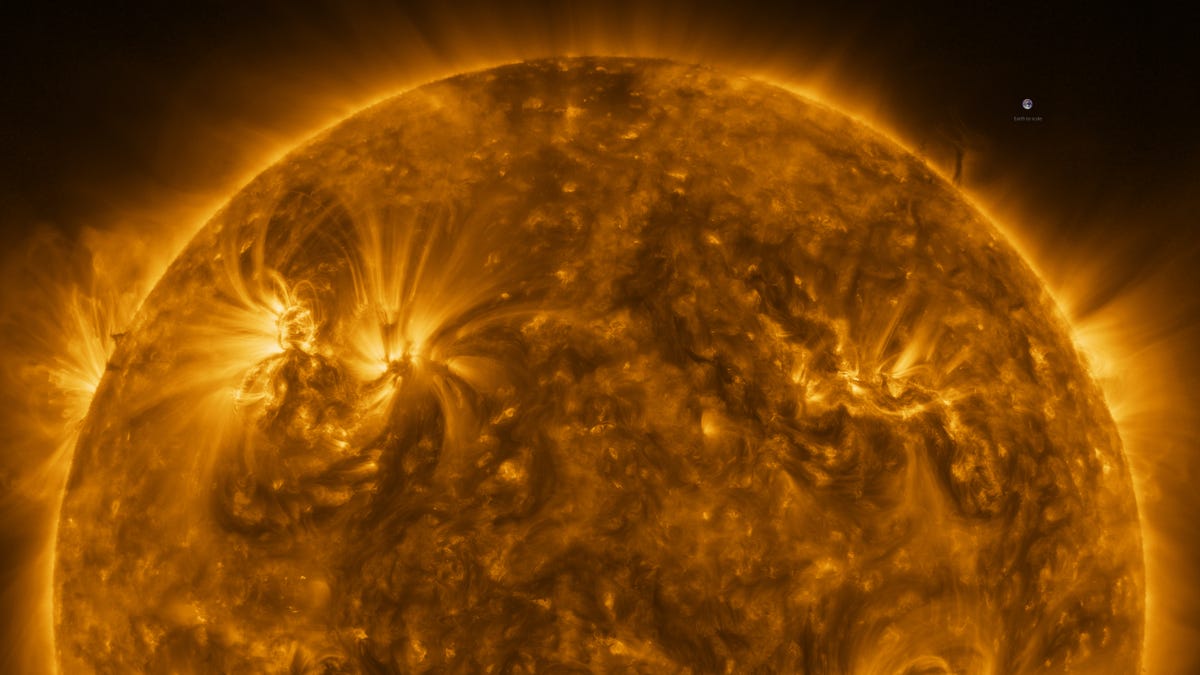Solar Spacecraft Snaps Best Image Yet of the Sun's Disc and Corona
Thanks, Solar Orbiter.

Don't speak, just look.
The European Space Agency and NASA's Solar Orbiter has given us some unprecedented views of the sun since it launched in February 2020. But its latest image is the best, biggest, and highest resolution yet. In fact, it's so big, CNET's back-end system won't even let me upload the photo in all its glory.
The image was created by building a mosaic of 25 snaps captured on March 7, when the Solar Orbiter was about 46.6 million miles from our star. For reference, that's about 10 million miles further from the sun than Mercury's orbit.
The Solar Orbiter bagged the shot with its Extreme Ultraviolet Imager, so what you're seeing in the image isn't what your own eyes would see, but ultraviolet light. If you squint, you can almost make out a creepy goblin face.
ESA says it's the "highest resolution image of the Sun's full disc and outer atmosphere, the corona, ever taken" and that it contains more than 83 million pixels. The full image is 9,148 by 9,112 pixels, 10 times better than a 4K TV, according to ESA.
If you'd like to see the image in all its glory, head over to ESA's website and scroll and zoom in to your heart's content. You can make out some pretty remarkable features and get a good view of the sun's corona, which is about 1.8 million degrees Fahrenheit. It's still unclear why the corona is much hotter than the surface of the sun, which is a nice, cool 10,000 degrees.
However, researchers proposed a mechanism for this strange problem in the journal Nature Astronomy on Thursday. The result could help better predict space weather and shore up Earth's defenses against geomagnetic storms, which are launched from the region and travel across our solar system.
Solar Orbiter has an ambitious decade-long mission: to image the never-before-seen polar regions of the star and offer an unprecedented look at the forces that shape our cosmic neighborhood.
On Saturday, March 26, the spacecraft will reach its first perihelion, its closest approach to the sun so far. It'll be inside the orbit of Mercury. Gradually it'll adjust its orbit so that it begins sweeping over the poles, giving us never-before-seen views of our solar system's fiery orb.

